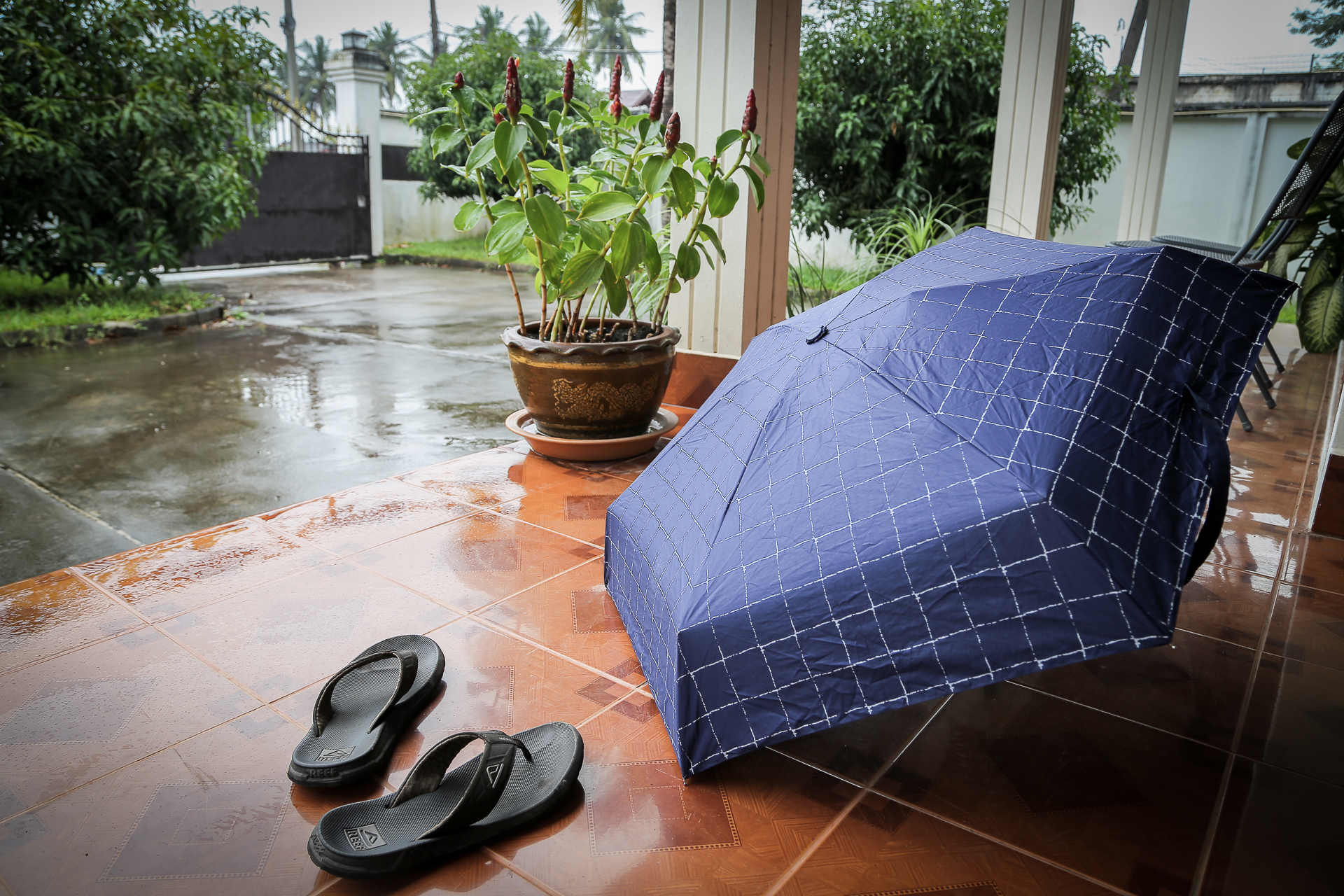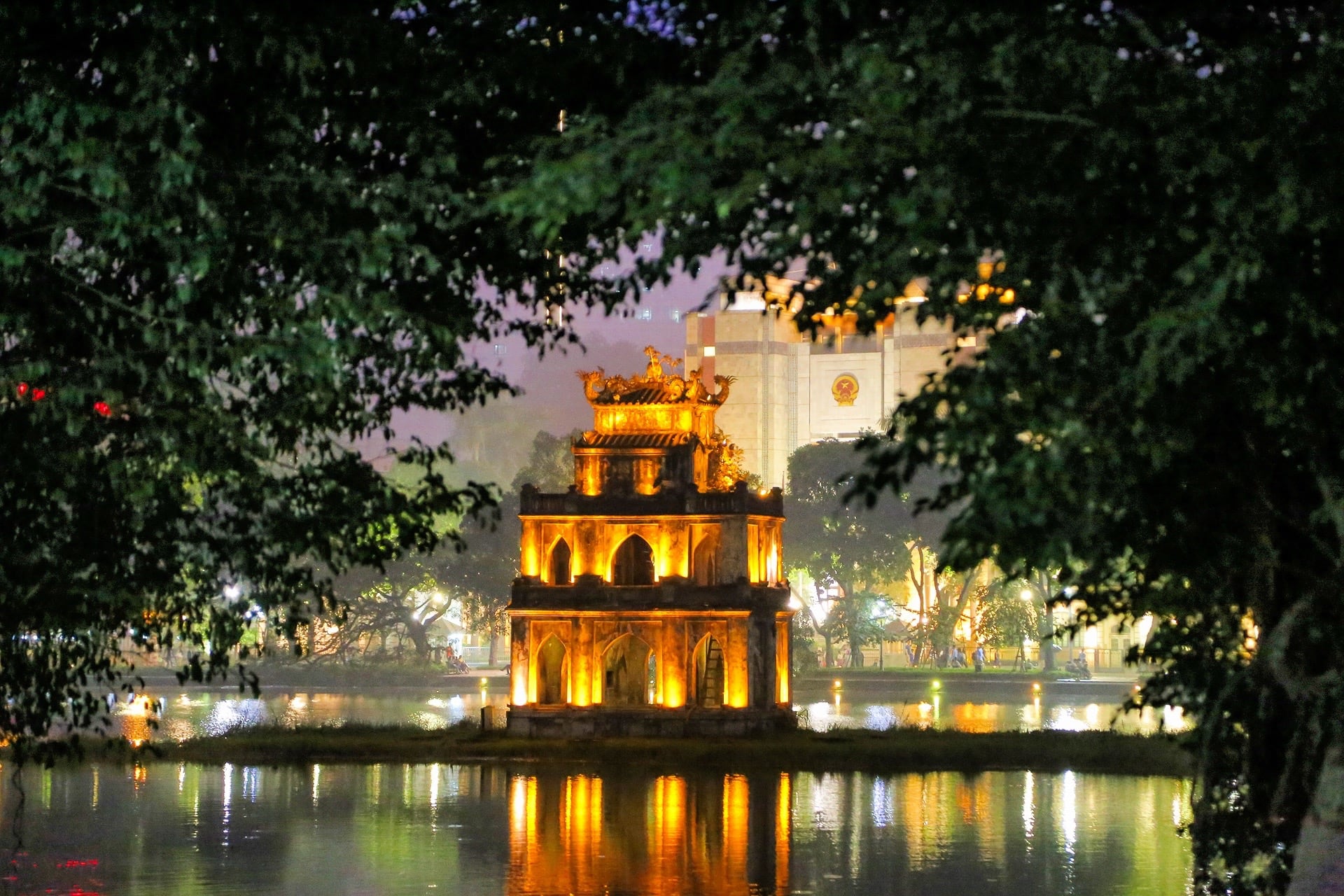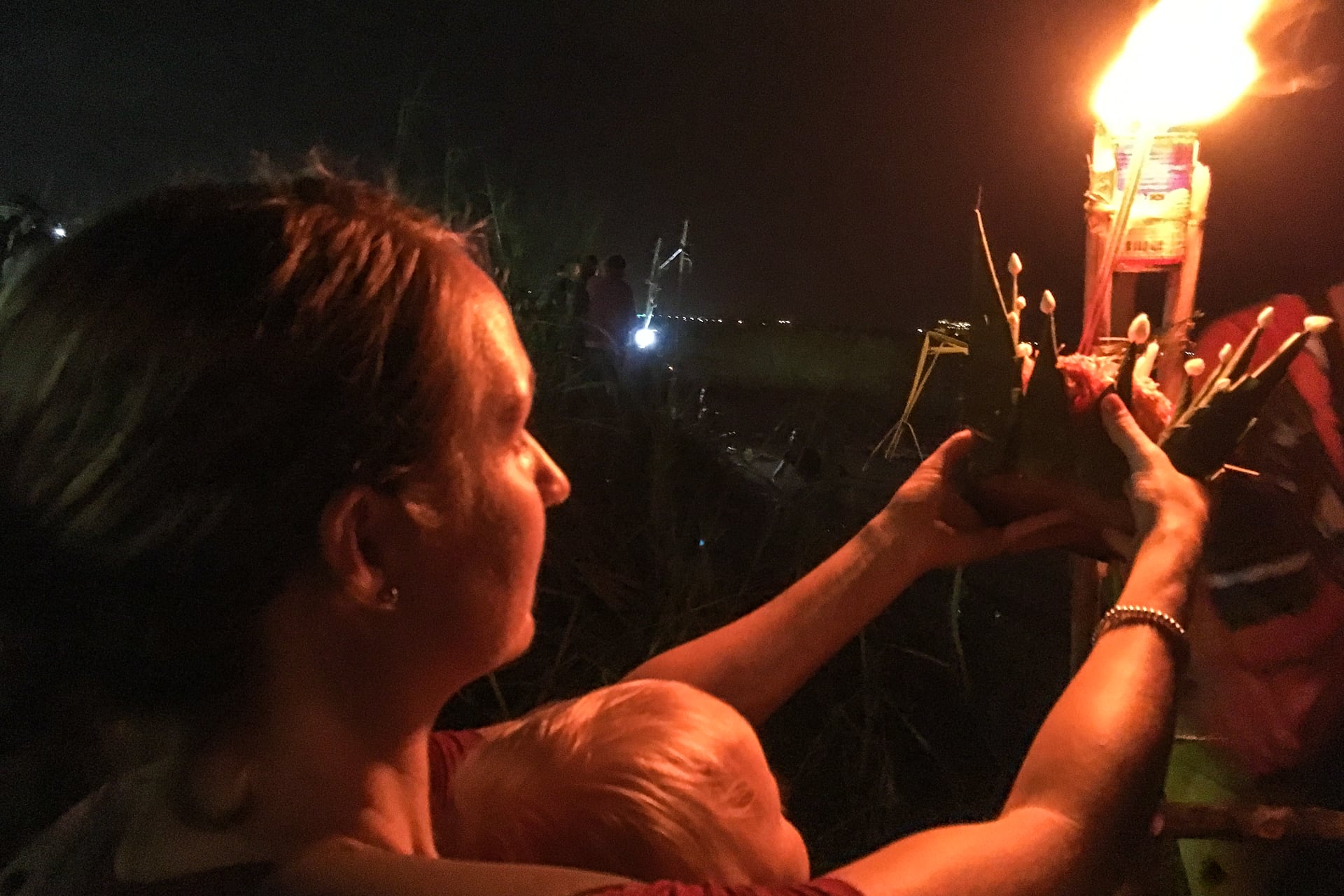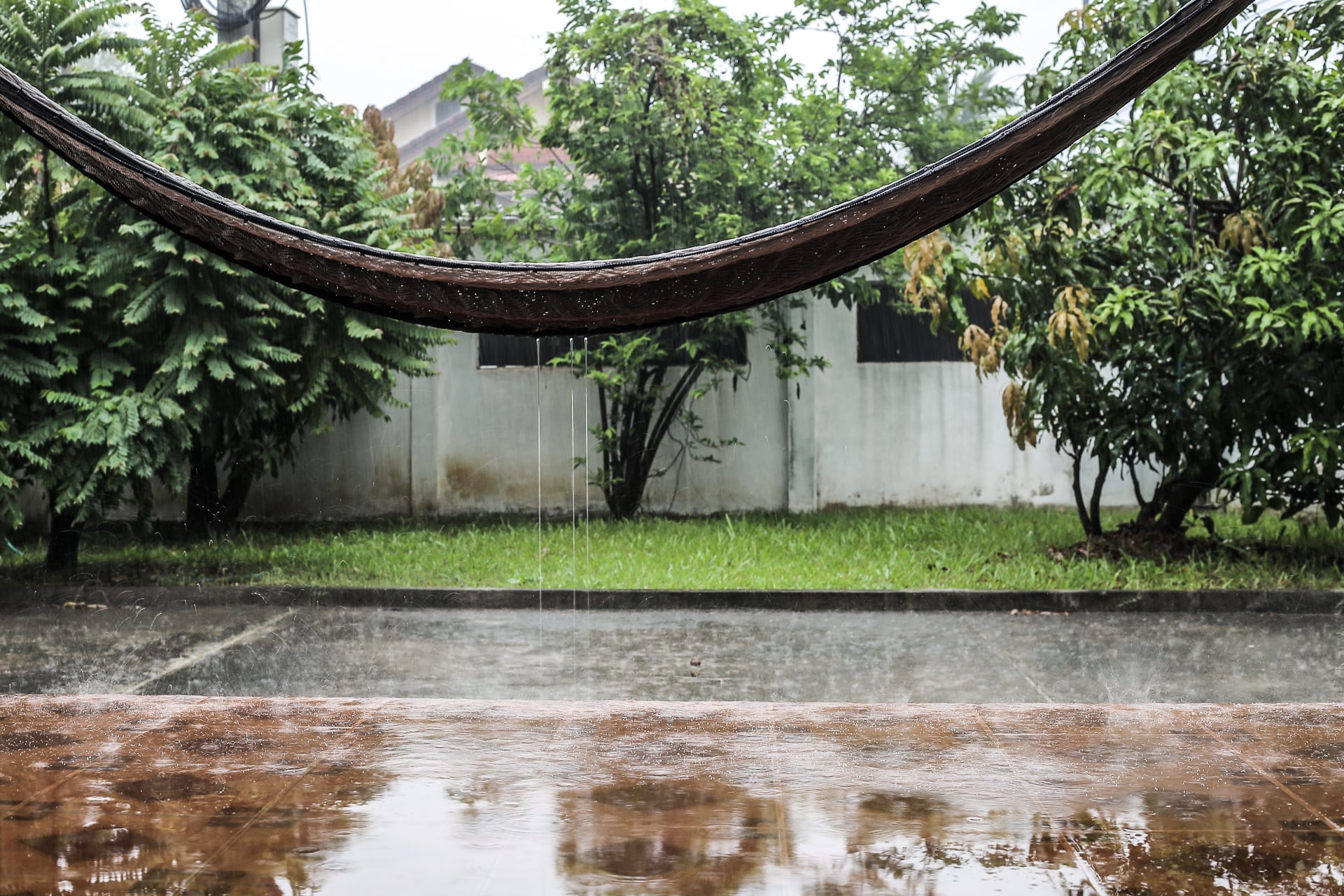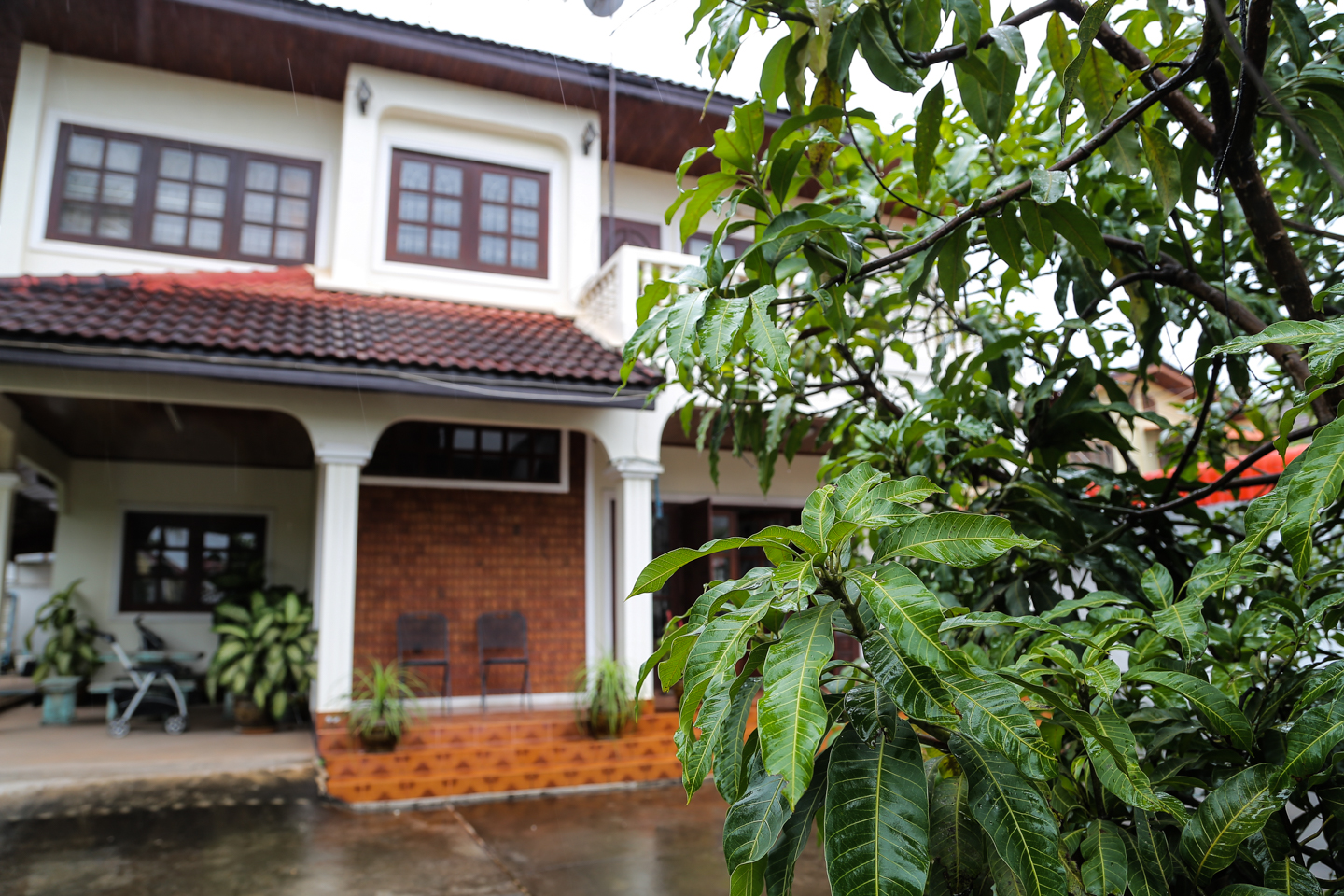
I’m not sure I even remember the dry season in Vientiane. What is that, anyway? The rains came early this year and are lasting later than usual. It’s been six months since I’ve seen dust form on our front porch and four since I brought the hammock in for the season. It’s been damp, dank, and dark for the better part of six months. Half a year!
Don’t get me wrong, we were well aware that we were moving to the tropics, and Southeast Asia at that—a region of the world—much like India—known for its pronounced monsoon period. Yet, somehow we refused to believe that the monsoon would ever stick around for six months, and locals are even surprised at how long this one has lasted.
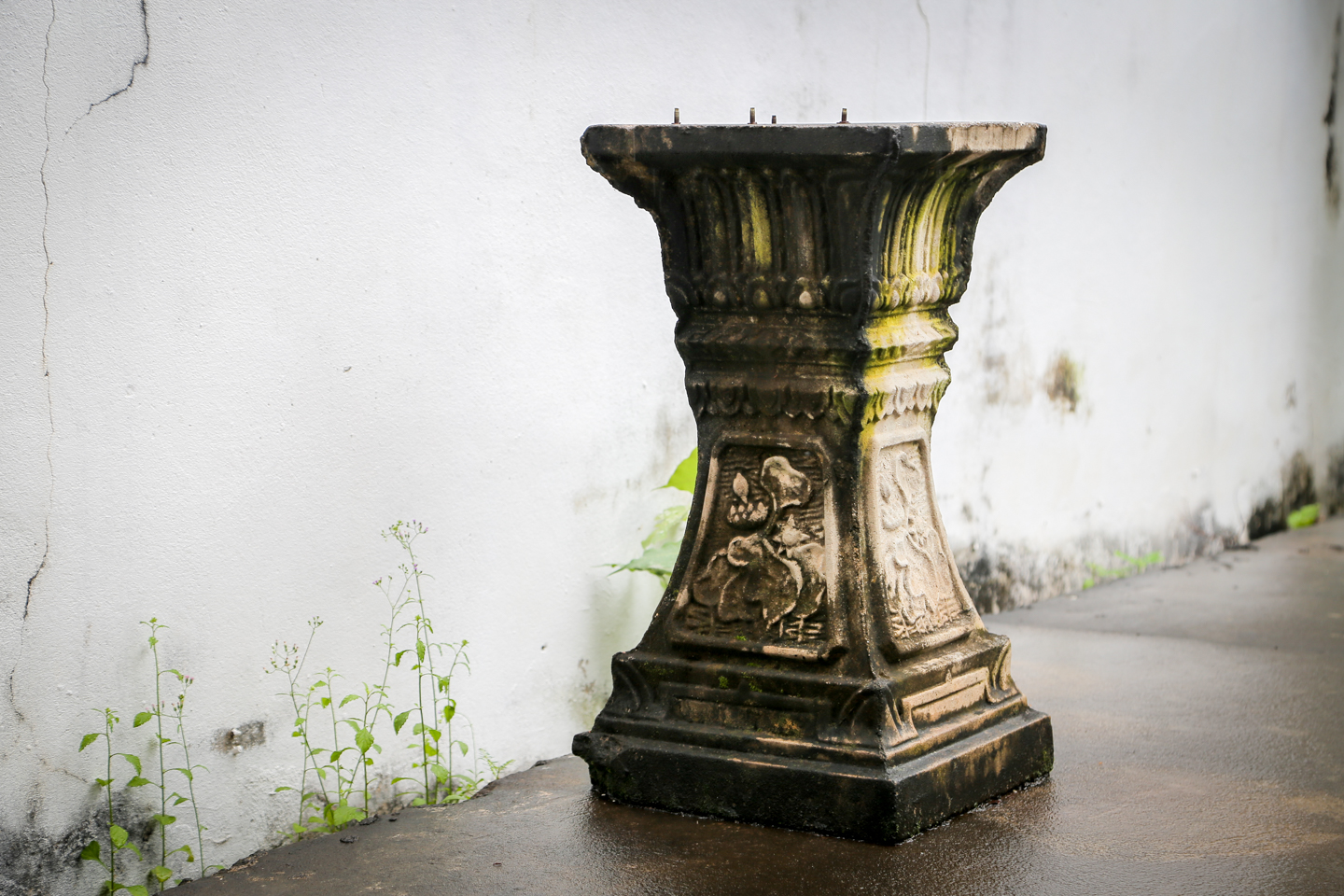
While the rainy season has been a protracted one, it can’t all be blamed on the monsoon. Rather, this year’s monsoon came with friends. It’s been bookended by some nasty storms from the Pacific (the nastiest ones seem to come from the east—thanks America). Vientiane rarely bears the brunt of a Pacific storm—it’s landlocked, after all. Instead, the storms seem to barrel through Vietnam, lose most of their intensity over the mountains between the two countries, and what is left is the rain—rain, rain, rain—which has the potential to do just as much (if not more) damage (e.g. Katrina in New Orleans).
Fortunately, this year’s storms haven’t caused widespread damage throughout Laos (though there have been small pockets of devastation—but not in Vientiane). But the rainy season ain’t over ’til it’s over, and this one most certainly is not over yet.
On our way back from the U.S. in late August, our last two flights drifted along on the tail of Typhoon Hato (Tropical Storm Ising) which, hours before, had caused more damage to Hong Kong and Macau than any other in nearly a century. It was a couple of bumpy flights, to say the least, and we settled back in to life in Vientiane weathering the remnants of the storm system.
A couple [very rainy] weeks later, I received the following security bulletin in my email:
U.S. Embassy Vientiane, Laos
Security Message for U.S. Citizens — Tropical Cyclone Doksuri
September 15, 2017
Tropical Cyclone Doksuri is expected to make landfall over Vietnam on Friday Sept 15. Heavy rains are expected in Laos with possible widespread flooding, landslides and travel disruptions. Please monitor local weather reports and exercise caution.
“Interesting…” I thought. The most concerning aspect of the email wasn’t the details, but rather the fact that I had received the email at all. “heavy rains…flooding, landslides and travel disruptions” are a good characterization of the prior five months here in Laos. Something pretty fierce must be coming down the pike to warrant a message like this. So, I went over to my trusty TSR (Tropical Storm Risk) website and took a look—and sure enough, there were three storms of note around the globe at the time: Irma, on it’s way through the Caribbean; Jose, barreling down on Mexico; and…Doksuri.
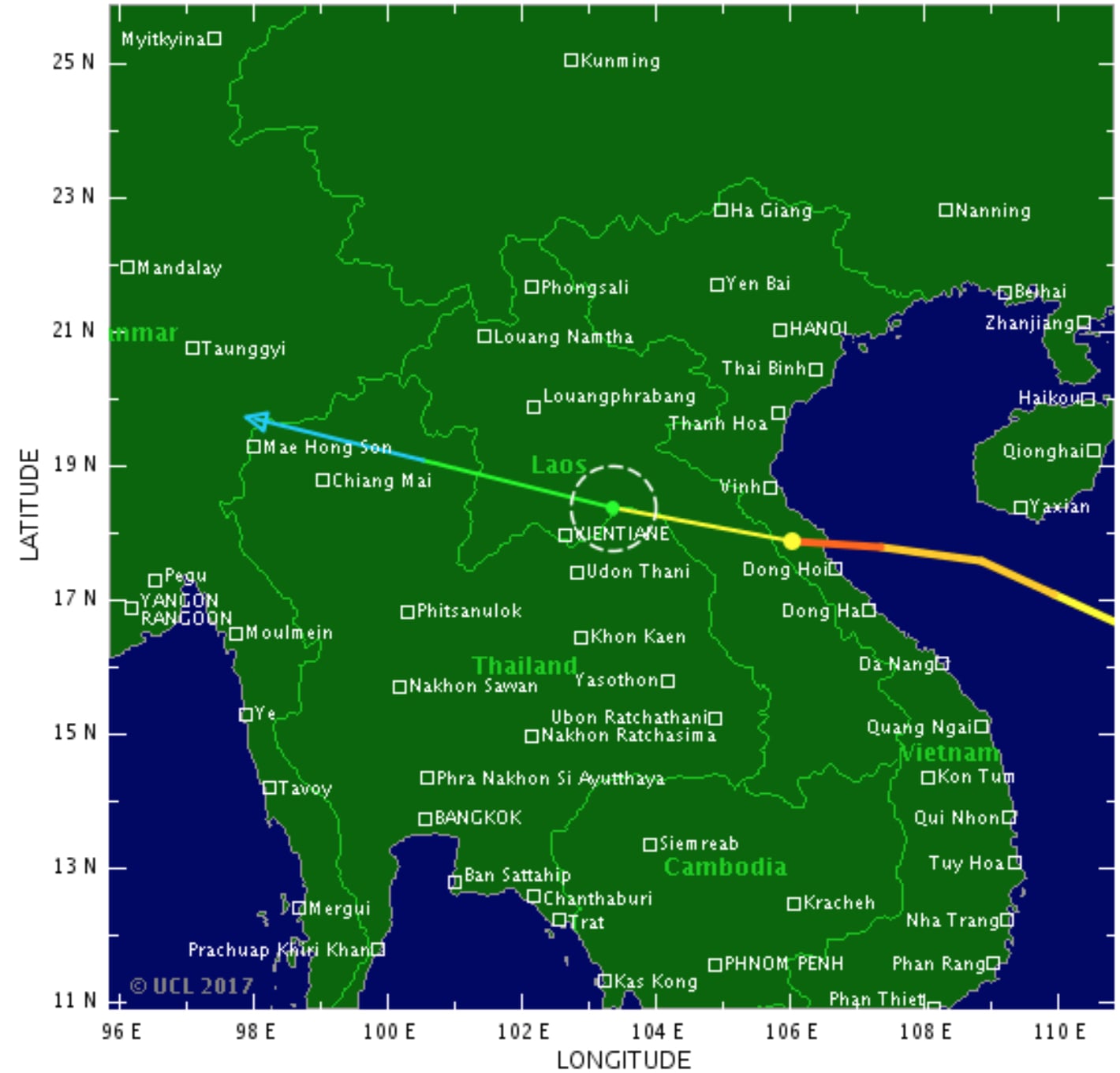
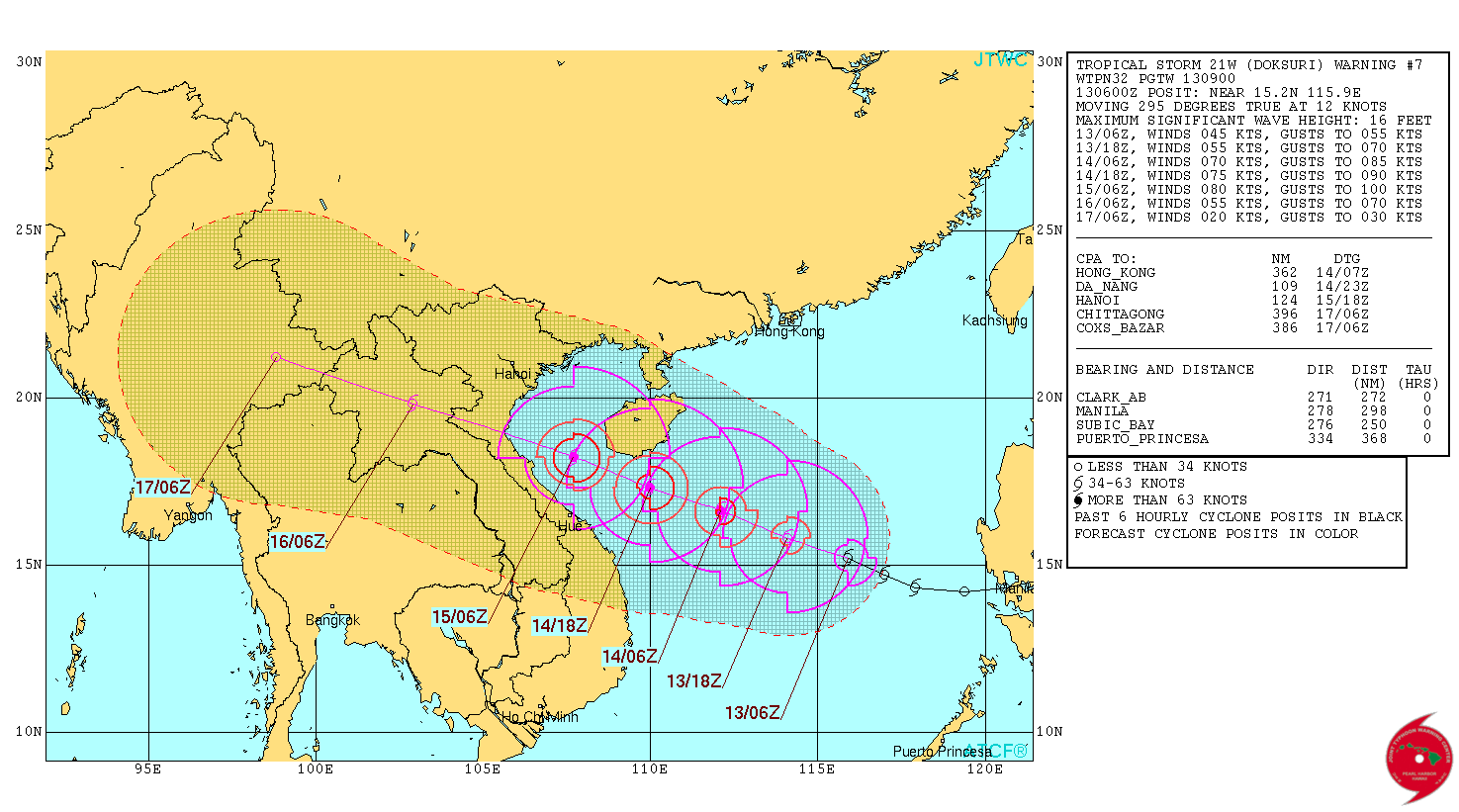
Just as the weekend approached, Typhoon Doksuri made landfall on the central coast of Vietnam as a Cat 3 typhoon with 115 mph sustained winds, killing at least 15 people and causing about a billion dollars worth of damage.
Hearing the news, Vientiane residents proceeded to stock up on water and supplies, cancel travel plans and hunker down. Lori made sure to get one of the 4×4 pickups in case of widespread flooding in the city, if we needed to get somewhere. The storm was forecast to be a Cat 1 arriving in the greater Vientiane region (74-95 mph winds and very heavy rainfall) and was due to arrive in the early morning hours of Saturday morning. Consequently, we brought patio furniture in, bolted windows, unplugged electronics and went to bed.
Then, around midnight, the rain started and didn’t stop for several hours, which wasn’t unusual for the time of year. We awoke the next morning to a still drizzle. The city was quiet, but no flooding, no damage, no nothing. We made our way to one of our favorite brunch spots and tried to take advantage of the relatively fair weather day. Anticlimactic, we thought. Nothing more than your average storm in Vientiane, and certainly nothing compared to living in Belize in the rainy season.

We brought the patio furniture back out, plugged back in the electronics, and went off to sleep Saturday night, believing Doksuri had fizzled out. Then, around midnight, I was awakened by a steady rattling sound. Realizing it was the panes of glass rattling in the window above my head, I got up and took a look out front. Our fruit trees and huge coconut tree were thrashing violently, the power lines looked like someone was using them to play jump rope, and trash and debris were whipping around our front yard and across the street. As I was processing what was going on, I heard a faint rumbling—almost like the sound of Noe’s white noise machine—in the distance, getting louder, then louder, then…
CRACK!
The room lit up like day, I was thrown back on my bed and…
BOOM!
Almost immediately followed by another:
CRACK! BOOM!
And another.
CRACK! BOOM!
Then, darkness, followed by silence. I opened up the balcony door to take a look outside. No AC, no street lights, just darkness, silence, and the smell of burning plastic and ozone. It seemed our house, our neighbor’s house or one of the utility pools out front had taken a direct hit from a lightning strike. Some houses had lights on, but everything in our general vicinity was black. I ran downstairs and around the house unplugging appliances in the case of a surge when the power comes back.
Generally, when the power goes out here, it miraculously is restored very quickly. How it happens, I’m not sure. But this time was a bit different. We opened up windows and waited for a while, but nothing happened. After about 30 minutes, Noe awoke (likely from the heat of not having an AC or fan), and we brought him (and his portable crib) into our room where we were at least able to open the balcony door and get some cross vent.
By this time, it had started to rain—hard—and the wind was still blowing with a lot of intensity. I was soaked from running outside and bringing things in. It was raining so hard, water began to come in from underneath the balcony door, so I put a towel down. Noe took a while to go to sleep, and just as he did, the power went back on. We made the decision to transfer him back to his room so we’d all get a better night sleep. I shuttered the windows, turned on the AC and tried to go back to sleep, though, the deafening rain, rattling of glass panes, and constant barrage of thunder made it nearly impossible. The storm went on for many hours, through the next morning and into the evening. Suffice it to say everything all around us—everything—was absolutely soaked.
The next evening, I was getting ready to head off to bed when colorful flashing lights and hissing outside caught my eye. I thought for sure that our neighbors had thrown some sort of firework over into our compound (like a colorful fountain) but quickly realized it was the transformer in front of our house blowing up, which ultimately had the strange effect of turning off half of the electrical circuits in our house and permanently frying two of our circuit breakers.
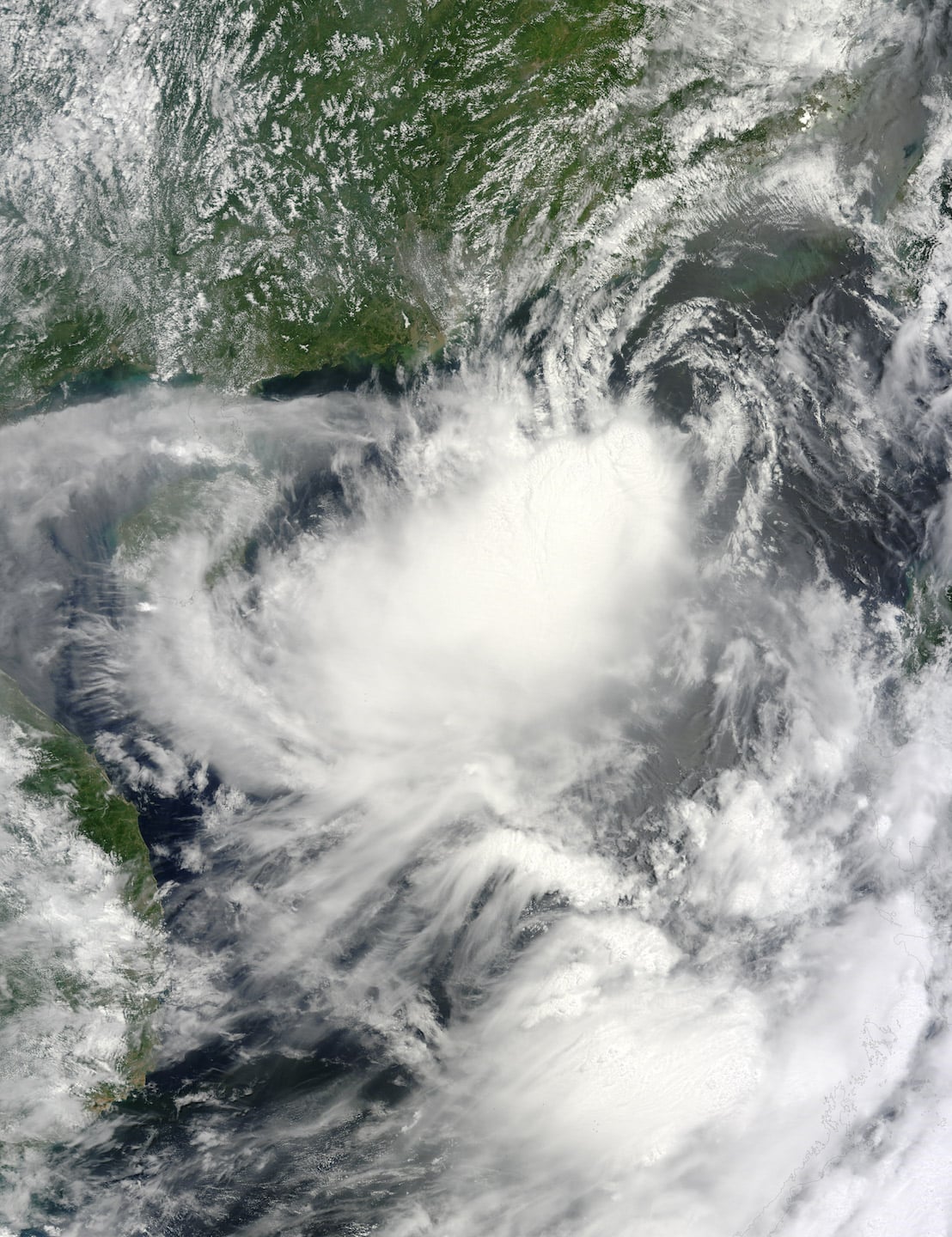
Over the following week, the roads were a mess, the rains continued, and we were inundated with snails everywhere. The canals were at capacity and everything was oversaturated.
The end of Buddhist Lent came and went. Revelers, generally excited to be marking the end of a healthy rainy season for their crops, were instead, reveling in more rain.
A few days later, Tropical Depression 23W arrived, bringing even more rain.
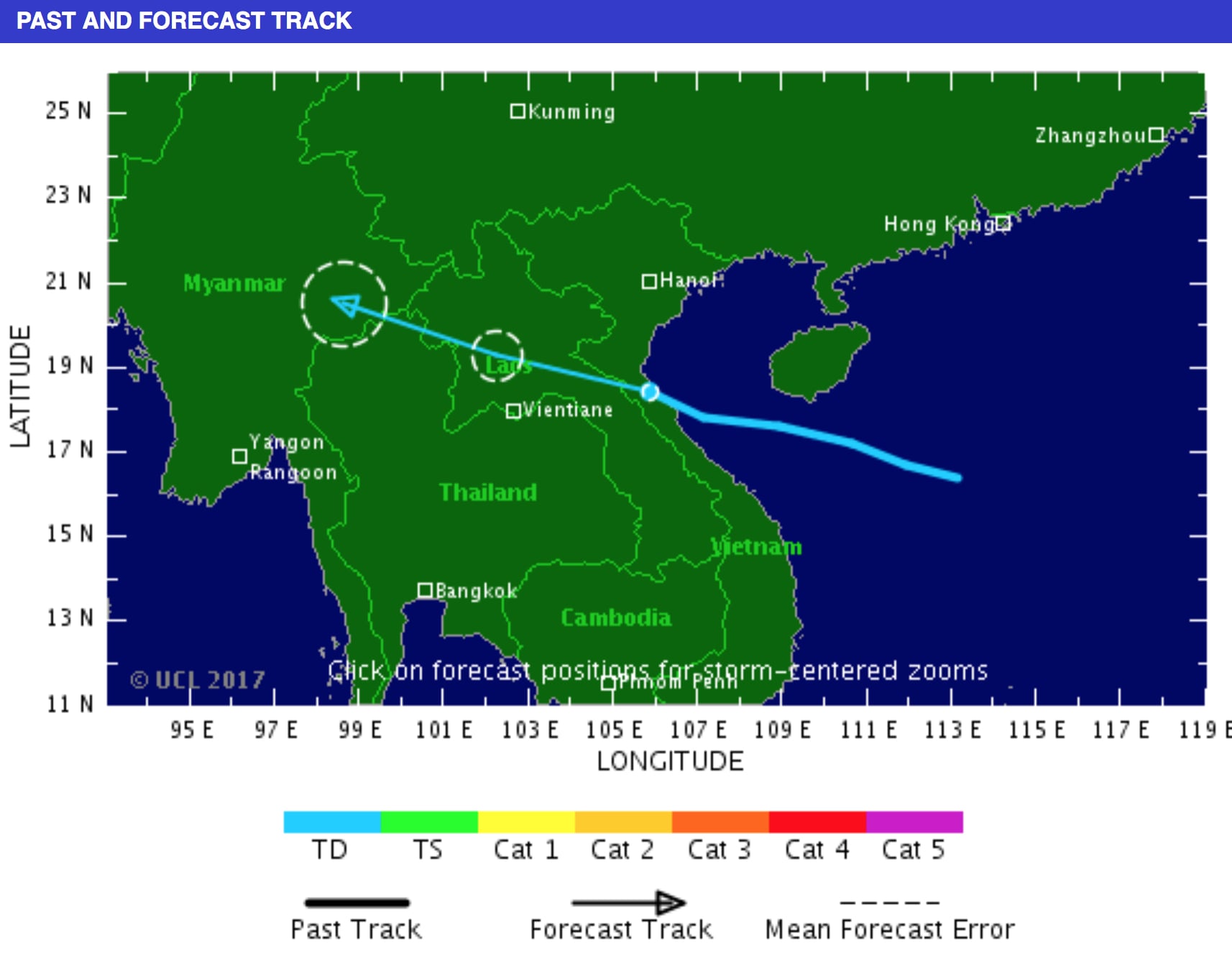
The outer bands of TD 23 settled in central Laos and lingering for about a week. The storm was responsible for the deaths of over a hundred people in Vietnam and eastern Laos, and dropped 100-150mm of rain, causing widespread crop destruction to the tune of nearly a billion dollars across both countries.
Of course, news in other parts of the world offered little solace during this period: Hurricanes Harvey, Irma and Maria in the Caribbean and Gulf; two devastating earthquakes in Mexico; record-breaking flooding in South Asia; and widespread, historic fires across California, Oregon and Washington—some of the most violent and vicious in a century.
Obviously, we know the rains will end at some point, and the dry season, before we know it will be here. But six months of dank, disgusting darkness is not what we ever expected—three months of solid rain, perhaps, bookended by a few weeks of isolated thunderstorms. Just as I write this, we’ve received word that yet another tropical depression is headed our way. We’ve also got a guest arriving tomorrow that will be staying with us through the weekend, so it looks like she’s due to get the full Southeast Asia rainy season experience.
I know that six months from now, we’ll be begging for a cool rain shower, but the old adage remains: You can’t miss something if it never leaves.
